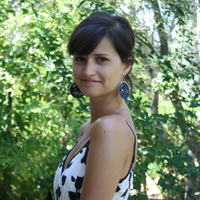Papers by Brendan Prawdzik
Edinburgh University Press eBooks, Apr 18, 2017

The Seventeenth century, Sep 5, 2019
The aim of this collection is to illustrate the pervasive influence of humanist rhetoric on early... more The aim of this collection is to illustrate the pervasive influence of humanist rhetoric on early-modern literature and philosophy. The first half of the book focuses on the classical rules of judicial rhetoric. One chapter considers the place of these rules in Shakespeare's The Merchant of Venice, while two others concentrate on the technique of rhetorical redescription, pointing to its use in Machiavelli's The Prince as well as in several of Shakespeare's plays, notably Coriolanus. The second half of the book examines the humanist background to the philosophy of Thomas Hobbes. A major new essay discusses his typically humanist preoccupation with the visual presentation of his political ideas, while other chapters explore the rhetorical sources of his theory of persons and personation, thereby offering new insights into his views about citizenship, political representation, rights and obligations and the concept of the state.
Studies in Philology, 2013

Explorations in Renaissance Culture, Dec 1, 2015
This article describes a Marvellian spirituality that remains generally continuous despite an evo... more This article describes a Marvellian spirituality that remains generally continuous despite an evolving theological outlook. It contends that Marvell’s poetry dramatizes the persistence of Original Sin within vulnerable and impermanent green enclosures; thus, the subject must always return to an inexorable history and materiality in which spirituality is grounded. The article considers Marvell’s skepticism and unusual conception of eschatological time, these being informed by the Book of Ecclesiastes. For Marvell, meditation on history remains bound up not only with spirituality but also with sensory perception — in particular, with the optical and tactile senses of water. The article concludes with a comparative analysis, of Marvell’s “Eyes and Tears” and Richard Crashaw’s “The Weeper,” that redefines Marvell as a deliberately anti-metaphysical poet.
Marvell studies, Dec 22, 2022
Focusing on Upon Appleton House, this article seeks to illumine Marvell's communication to audien... more Focusing on Upon Appleton House, this article seeks to illumine Marvell's communication to audiences (or to the idea of audience) and thereby to find an embodied authenticity. Examining the relationship between narrative and surface-level appeals, the article excavates stanzas that represent common hunting practices and thereby figure the interpreter's entrapment. It focuses on the following intertexts: Gervase Markham's Hungers Prevention (1621), a fowling text where Marvell found his "inverted tree"; Culex, a brief mock epic attributed to Virgil that locates Marvell's comedic gestures in grand poetic ambition; and Augustine's Confessions, which in its metaphorical treatment of birdlime helps us to understand Marvell's investment in poetry to be a suspension in the self-conscious pleasure of a recursive embodied process.
Marvell studies, 2019
This article has been peer reviewed through the double-blind process of Marvell Studies, which is... more This article has been peer reviewed through the double-blind process of Marvell Studies, which is a journal published by the Open Library of Humanities.

The Seventeenth century, Oct 8, 2013
Structures of feeling in seventeenth-century cultural expression, edited by Susan McClary, Toront... more Structures of feeling in seventeenth-century cultural expression, edited by Susan McClary, Toronto, University of Toronto Press in association with the UCLA Center for 17th- and 18th- Century Studies & the William Andrews Clark Memorial Library, 2013, xv + 382 pp., £80.00 (hardback), ISBN 978-1-4426-4062-7Structures of Feeling in Seventeenth-Century Cultural Expression emerged from a 2004 to 2005 lecture series, organized by the UCLA Center for 17th- and 18th- Century Studies, at the William Andrews Clark Memorial Library in Los Angeles.Susan McClary's introduction presents the seventeenth century as a pivotal period for pre-Enlightenment "theories for understanding and manipulating the passions, construc- tions of gender and the erotic, expressions of religious devotion, ways of experiencing time and space, [and] conceptions of the self" torquing through historical change (3). At the book's core is Raymond Williams's "structures of feeling", in all of its difficulty and elusiveness. Each of the volume's essays understands this phrase differently; the subse- quently nebulous focus proves both a virtue and a liability, as it admits diverse approaches but threatens to reduce the whole to a muddle of cultural narratives and analyses. Yet, largely through McClary's efforts to structure and frame it, the book succeeds in showing a seventeenth century defined by mutating senses of motion and space, dynamic relations between "texts" and feelings (as intellectual and embodied) and cultural forms organizing shifting social relations.In both its title and introduction, Structures of Feeling presents a rather misleading front of disciplinary diversity. McClary underscores the need to move beyond textual studies per se towards a more varied view of expressive textures: "So long as we demand verbal confirmation as evidence for historical arguments, we will continue to neglect some of the most profound changes that have occurred within the development of European thought" (4). Richard Rambuss provides the book's only literary treatment with his provocative and paradigm-challenging, if somewhat inconclusive, analysis of Richard Crashaw's verse and its emphatically hostile reception. Unexpectedly, eight of the twelve essays focus on music and/or sound. While the aural may be an under- appreciated but crucial mode of access to seventeenth-century "structures of feeling", greater disciplinary diversity might have yielded a more representative and altogether more significant contribution.1The two music-oriented essays of the final section, audaciously titled "Toward a History of Time and Subjectivity", by McClary and Richard Leppert, respectively, move compel- lingly from sensitive close analyses to profound implications for the understanding of temporal consciousness, relationships between art and society and secularizing processes. Yet given the book's dominant focus on music, a middle section on "The Politics of Opera" surprisingly contributes least to the project. It includes two pieces; first, Wendy Heller 's essay on Ovidian metamorphosis in Venetian opera, which, though colourfully descriptive, offers the self-evident pay-off that "feelings give birth to music" (200) and that the opera privileged Ovid's myths of desire-induced, music-generating change. Louise K. Stein's work on Gaspar de Haro y Guzman and the financial, political, personal and aesthetic influences on late seventeenth-century Neapolitan opera follows. Though Stein brings abundant archival research and historical knowledge, the essay does not offer claims extensive enough to strengthen the book's core.Structures of Feeling excites with its kaleidoscope of passions, forms of repression, spectacle, grotesque and erotic bodies, tensions and conflicts, sensory richness and 32 illustrations. Several essays impress. Daniel Garber offers an effortlessly engaging study of the passions and post-Newtonian mathematics, with a lucid account of Spinoza: a fitting foundation, or stabilizing anchor, for such a potentially cumbersome volume. …
argument is lessened. It is not that the qualification as propaganda is wrong or unfounded, but r... more argument is lessened. It is not that the qualification as propaganda is wrong or unfounded, but rather that it brings to the material a framework that is inadequate. It serves to close down the discussion in contrast to what Welch does so beautifully: to open it up, in new and important ways.
Notes and Queries, Aug 26, 2014
Marvell studies, May 20, 2022
Focusing on Upon Appleton House, this article seeks to illumine Marvell's communication to audien... more Focusing on Upon Appleton House, this article seeks to illumine Marvell's communication to audiences (or to the idea of audience) and thereby to find an embodied authenticity. Examining the relationship between narrative and surface-level appeals, the article excavates stanzas that represent common hunting practices and thereby figure the interpreter's entrapment. It focuses on the following intertexts: Gervase Markham's Hungers Prevention (1621), a fowling text where Marvell found his "inverted tree"; Culex, a brief mock epic attributed to Virgil that locates Marvell's comedic gestures in grand poetic ambition; and Augustine's Confessions, which in its metaphorical treatment of birdlime helps us to understand Marvell's investment in poetry to be a suspension in the self-conscious pleasure of a recursive embodied process.
Martin Dzelzainis and Edward Holberton, eds. The Oxford Handbook of Andrew Marvell. Oxford: Oxfor... more Martin Dzelzainis and Edward Holberton, eds. The Oxford Handbook of Andrew Marvell. Oxford: Oxford University Press, 2019. xxii + 822 pp. $150.00. Review by Brendan Prawdzik, Pennsylvania State University
Raphael’s St. Margaret Paintings as a Reflection of Their Recipient Patron, Marguerite de Navarre

Explorations in Renaissance Culture, 2015
This article describes a Marvellian spirituality that remains generally continuous despite an evo... more This article describes a Marvellian spirituality that remains generally continuous despite an evolving theological outlook. It contends that Marvell’s poetry dramatizes the persistence of Original Sin within vulnerable and impermanent green enclosures; thus, the subject must always return to an inexorable history and materiality in which spirituality is grounded. The article considers Marvell’s skepticism and unusual conception of eschatological time, these being informed by the Book of Ecclesiastes. For Marvell, meditation on history remains bound up not only with spirituality but also with sensory perception — in particular, with the optical and tactile senses of water. The article concludes with a comparative analysis, of Marvell’s “Eyes and Tears” and Richard Crashaw’s “The Weeper,” that redefines Marvell as a deliberately anti-metaphysical poet.

The Seventeenth Century, 2013
Structures of feeling in seventeenth-century cultural expression, edited by Susan McClary, Toront... more Structures of feeling in seventeenth-century cultural expression, edited by Susan McClary, Toronto, University of Toronto Press in association with the UCLA Center for 17th- and 18th- Century Studies & the William Andrews Clark Memorial Library, 2013, xv + 382 pp., £80.00 (hardback), ISBN 978-1-4426-4062-7Structures of Feeling in Seventeenth-Century Cultural Expression emerged from a 2004 to 2005 lecture series, organized by the UCLA Center for 17th- and 18th- Century Studies, at the William Andrews Clark Memorial Library in Los Angeles.Susan McClary's introduction presents the seventeenth century as a pivotal period for pre-Enlightenment "theories for understanding and manipulating the passions, construc- tions of gender and the erotic, expressions of religious devotion, ways of experiencing time and space, [and] conceptions of the self" torquing through historical change (3). At the book's core is Raymond Williams's "structures of feeling", in all of its difficulty and elusiveness. Each of the volume's essays understands this phrase differently; the subse- quently nebulous focus proves both a virtue and a liability, as it admits diverse approaches but threatens to reduce the whole to a muddle of cultural narratives and analyses. Yet, largely through McClary's efforts to structure and frame it, the book succeeds in showing a seventeenth century defined by mutating senses of motion and space, dynamic relations between "texts" and feelings (as intellectual and embodied) and cultural forms organizing shifting social relations.In both its title and introduction, Structures of Feeling presents a rather misleading front of disciplinary diversity. McClary underscores the need to move beyond textual studies per se towards a more varied view of expressive textures: "So long as we demand verbal confirmation as evidence for historical arguments, we will continue to neglect some of the most profound changes that have occurred within the development of European thought" (4). Richard Rambuss provides the book's only literary treatment with his provocative and paradigm-challenging, if somewhat inconclusive, analysis of Richard Crashaw's verse and its emphatically hostile reception. Unexpectedly, eight of the twelve essays focus on music and/or sound. While the aural may be an under- appreciated but crucial mode of access to seventeenth-century "structures of feeling", greater disciplinary diversity might have yielded a more representative and altogether more significant contribution.1The two music-oriented essays of the final section, audaciously titled "Toward a History of Time and Subjectivity", by McClary and Richard Leppert, respectively, move compel- lingly from sensitive close analyses to profound implications for the understanding of temporal consciousness, relationships between art and society and secularizing processes. Yet given the book's dominant focus on music, a middle section on "The Politics of Opera" surprisingly contributes least to the project. It includes two pieces; first, Wendy Heller 's essay on Ovidian metamorphosis in Venetian opera, which, though colourfully descriptive, offers the self-evident pay-off that "feelings give birth to music" (200) and that the opera privileged Ovid's myths of desire-induced, music-generating change. Louise K. Stein's work on Gaspar de Haro y Guzman and the financial, political, personal and aesthetic influences on late seventeenth-century Neapolitan opera follows. Though Stein brings abundant archival research and historical knowledge, the essay does not offer claims extensive enough to strengthen the book's core.Structures of Feeling excites with its kaleidoscope of passions, forms of repression, spectacle, grotesque and erotic bodies, tensions and conflicts, sensory richness and 32 illustrations. Several essays impress. Daniel Garber offers an effortlessly engaging study of the passions and post-Newtonian mathematics, with a lucid account of Spinoza: a fitting foundation, or stabilizing anchor, for such a potentially cumbersome volume. …
Studies in Philology, 2013











Uploads
Papers by Brendan Prawdzik